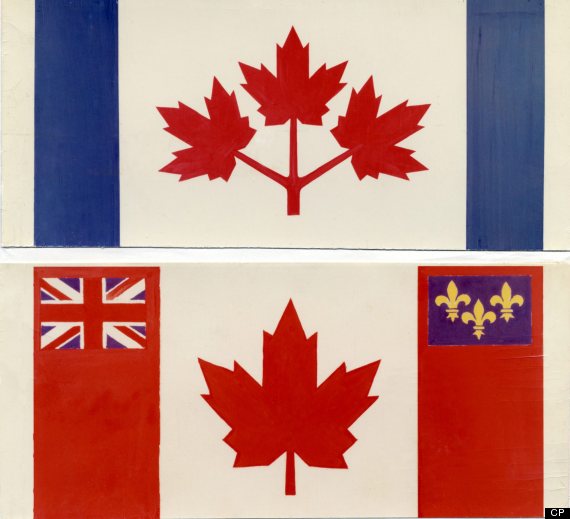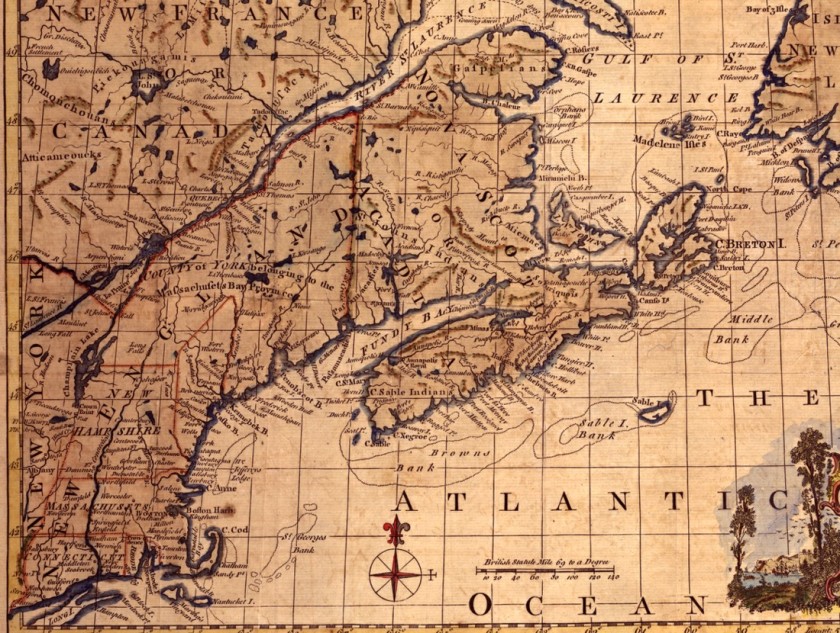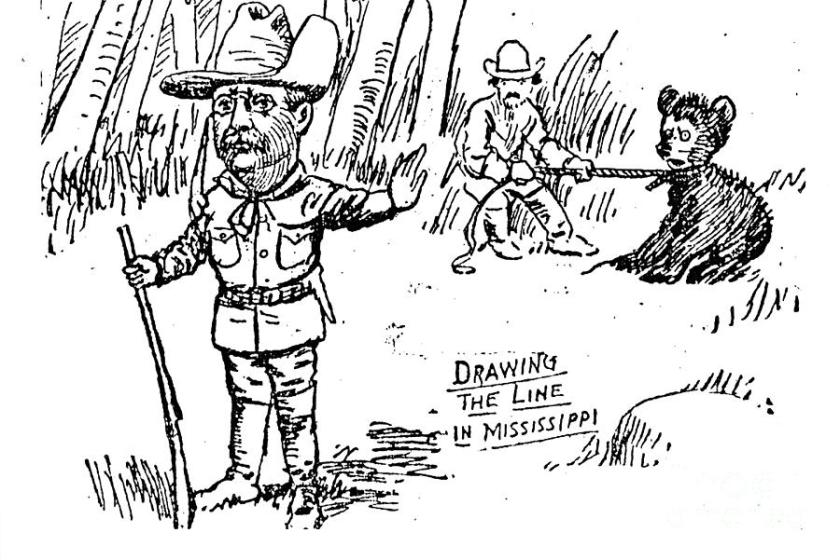It’s Thursday! Did You Know…
* 1965 – Maple Leaf Flag Inaugurated in Parliament Hill Ceremony
Canada’s maple leaf flag was officially inaugurated in ceremonies across the nation and around the world, 53 years ago today. It was a momentous occasion celebrated by many, but not everyone was pleased. Some, including former Prime Minister John Diefenbaker, were disappointed with the decision to introduce a new flag. “Flags cannot be imposed, the sacred symbols of a people’s hopes and aspirations,” said Diefenbaker.
Others, simply couldn’t agree on what the new flag should look like, and a few felt that replacing the Red Ensign was a betrayal to our connection with Great Britain. But these, of course, were not new sentiments. In fact, there had long been controversy surrounding the question of whether to adopt a distinctive Canadian flag. Prime Minister Mackenzie King tried his hand opening the dialogue in 1925, but balked at the idea when he encountered significant opposition.
Twenty years later, he floated the idea again when he tabled a joint committee made up of members of the Senate and the House of Commons to explore the option further. In total, the committee received nearly 2,500 designs from the public, with almost 67 percent of those submissions including a maple leaf. Among those concepts was Sudbury mayor Bill Beaton’s. His vision included a solid purple field with a golden maple leaf as the charge. Beaton chose the unique colors because since no other country in the world utilized those hues it would make Canada’s flag truly distinctive. While Beaton’s design didn’t make the cut, his passion was emblematic of the change that many were pushing for at the time. But in the end, it didn’t matter. After the committee submitted its report, King decided to not follow through on its recommendations because there was no clear consensus.
So, the flag debate went dormant, until Lester Pearson revived it in 1960. Then, leader of the opposition, Pearson believed that developing a new national flag would serve as a symbol of unity, and help bring the country together at a time when it felt like Canada was coming apart at the seams. For him, it was imperative the country adopt its own distinctive flag, and that it was devoid of any past colonial association.
Not long after he became prime minister in 1963, Pearson appointed a special parliamentary committee to pursue finding Canada a flag of its own. It was a tall order. Over the course of 1964, they received thousands of submissions, and even a few from famed Group of Seven painter, A.Y. Jackson. After reviewing all of the various designs, the committee painstakingly whittled it down to three options, one of which included a flag that consisted of a red maple leaf on a solid white background flanked by two red banners.
But the matter was far from over. Parliament could not agree on the recommendation, and a debate ensued, lasting nearly six months. The only reason it eventually ended was that the Pearson government invoked a motion of closure in order to settle the argument with a final vote. So, in the early morning hours of Dec. 15, 1964, the issue was resolved at last. One hundred sixty-three voted to adopt the maple leaf flag, more than enough to counter the 73 who opposed it and the 23 members who abstained. Two days later, it was approved by the Senate, and by the end of January 1965, Queen Elizabeth had given it royal assent.
And so, on Feb. 15, 1965, the maple leaf first began fluttering over Parliament Hill. Ninety-eight years after Confederation, Canada had its own flag and one that was emblematic of the country it represented.
During the flag-raising ceremony on that day in Ottawa, Pearson delivered an address that included the following words: “As the symbol of a new chapter in our national story, our maple leaf flag will become a symbol of that unity in our country without which one cannot grow in strength and purpose.”
While the adoption of the flag did not mitigate the political and social issues our country was facing, the maple leaf became a point of pride for Canadians. It became a symbol of our resiliency and distinctiveness as a nation and a powerful emblem that people could identify with from coast to coast.

* 1898 The Maine explodes
A massive explosion of unknown origin sinks the battleship USS Maine in Cuba’s Havana harbor, killing 260 of the fewer than 400 American crew members aboard.
One of the first American battleships, the Maine weighed more than 6,000 tons and was built at a cost of more than $2 million. Ostensibly on a friendly visit, the Maine had been sent to Cuba to protect the interests of Americans there after a rebellion against Spanish rule broke out in Havana in January.
An official U.S. Naval Court of Inquiry ruled in March that the ship was blown up by a mine, without directly placing the blame on Spain. Much of Congress and a majority of the American public expressed little doubt that Spain was responsible and called for a declaration of war.
Subsequent diplomatic failures to resolve the Maine matter, coupled with United States indignation over Spain’s brutal suppression of the Cuban rebellion and continued losses to American investment, led to the outbreak of the Spanish-American War in April 1898.
Within three months, the United States had decisively defeated Spanish forces on land and sea, and in August an armistice halted the fighting. On December 12, 1898, the Treaty of Paris was signed between the United States and Spain, officially ending the Spanish-American War and granting the United States its first overseas empire with the ceding of such former Spanish possessions as Puerto Rico, Guam, and the Philippines.
In 1976, a team of American naval investigators concluded that the Maine explosion was likely caused by a fire that ignited its ammunition stocks, not by a Spanish mine or act of sabotage.

* 1776 Nova Scotia governor sends word of potential American invasion
From Halifax, Canada, on this day in 1776, Governor Francis Legge reports to British headquarters in London that traitorous elements in Cumberland, Nova Scotia, have contacted American General George Washington. Washington received a letter from the Nova Scotians, in which they expressed their sympathy for the American cause, on February 8. They invited General Washington and the Continental Army to invade Nova Scotia at his earliest possible convenience.
Legge found himself in a precarious position. He had alienated many of his constituents through a zealous anti-corruption probe. Now he reported that Nova Scotia had spawned a nascent revolutionary movement. Some of those whom Legge accused of corruption in his drive to clean up colonial politics had allies in the imperial capital who were insisting that he explain himself in person.
Fortunately for Legge, little notice was taken of his subjects’ letter to Washington. The Continental Congress decided on February 16 to allow General Washington to investigate the expediency and practicability of an Expedition to Nova Scotia but cautioned that Washington should by no means accept the plan proposed for the destruction of the Town of Halifax. After Benedict Arnold retreated in May 1776 from his six-month long siege of Quebec, which included the disastrous attack Quebec on December 31, 1775, the Continental Army gave up its hope that Canada would join the rebellion. Still, Governor Legge received orders to return to London in February 1776 and departed Halifax in May.
Although Canada ceased to be a direct military target, it continued to play an important role as a haven for Loyalists and slaves fleeing from Patriots less concerned with other peoples’ liberties than their own. On December 18, 1778, a force of New Jersey and New York Loyalists, The King’s Orange Rangers, traveled to Liverpool, Nova Scotia, to help in its defense against Patriot privateers, privately owned ships that used pirate tactics to disrupt British shipping. The Rangers remained until August 23, 1783. Nova Scotia ultimately attracted 30,000 American Loyalists, one-tenth of which were fleeing African slaves. Of the slaves, one third eventually resettled in Sierra Leone. White Loyalists moved to Canada to flee the abuse of Patriot neighbors, African slaves came to British Canada in order to gain freedom from their Patriot owners.

* 1933 FDR escapes assassination in Miami
On this day in 1933, a deranged, unemployed bricklayer named Giuseppe Zangara shouts “Too many people are starving!” and fires a gun at America’s president-elect, Franklin D. Roosevelt.
Roosevelt had just delivered a speech in Miami’s Bayfront Park from the back seat of his open touring car when Zangara opened fire with six rounds. Five people were hit. The president escaped injury but the mayor of Chicago, Anton Cermak, who was also in attendance, received a mortal stomach wound in the attack.
Several men tackled the assailant and might have beaten him to death if Roosevelt had not intervened, telling the crowd to leave justice to the authorities. Zangara later claimed, “I don’t hate Mr. Roosevelt personally I hate all officials and anyone who is rich.” He also told the FBI that chronic stomach pain led to his action: “Since my stomach hurt I want to make even with the capitalists by kill the president. My stomach hurt long time.”
Zangara’s extreme action reflected the anger and frustration felt among many working Americans during the Great Depression. At the time of the shooting, Roosevelt was still only the president-elect and had yet to be sworn in. His policies remained untested, but reports of Roosevelt’s composure during the assassination attempt filled the following day’s newspapers and did much to enforce Roosevelt’s public image as a strong leader.
Unsubstantiated reports later claimed that Zangara’s real target had been Cermak and hinted at Zangara’s connection to organized crime in Chicago. Zangara was initially tried for attempted murder and sentenced to 80 years in prison, but when Mayor Cermak later died of his wounds, Zangara was retried and sentenced to death. Zangara died on the electric chair on March 5, 1933.

* 1903 First Teddy bear goes on sale
On this day in 1903, toy store owner and inventor Morris Michtom places two stuffed bears in his shop window, advertising them as Teddy bears. Michtom had earlier petitioned President Theodore Roosevelt for permission to use his nickname, Teddy. The president agreed and before long, other toy manufacturers began turning out copies of Michtom’s stuffed bears, which soon became a national childhood institution.
One of Theodore Roosevelt’s hunting expeditions provided the inspiration for the Teddy bear. Ironically, though he was an avid conservationist, Roosevelt-led hunting trips often resulted in excessive slaughter, including one African trip during which his party killed more than 6,000 animals for sport and trophies. However, the idea for the teddy bear likely arose out of one of Roosevelt’s more compassionate acts.
Reports differ as to the exact details of the inspiration behind the teddy bear, but it is thought that while hunting in Mississippi in 1902, Roosevelt came upon an old injured black bear that his guides had tied to a tree. (The age, sex, and state of health of the bear remain contested.) While some reports claim Roosevelt shot the bear out of pity for his suffering, others insist he set the bear free. Political cartoonists later portrayed the bear as a cub, implying that under the tough, outdoorsy and macho image of Roosevelt lay a much softer, more sensitive interior.

Today’s Sources:
* Canadian History Timeline – Canada’s Historical Chronology http://canadachannel.ca/todayincanadianhistory/index.php
* Sudbury https://www.sudbury.com/columns/canada150-52-years-ago-today-the-maple-leaf-flag-first-flew-537178
* This Day In History – What Happened Today http://www.history.com/this-day-in-history/


My dad is not a fan of how our flag looks but I like it. Nice to learn the story behind its design here.
LikeLike
Folks got real upset over the Maine’s destruction. That painting with the bodies flying up into the air is a doozy. Both FDR and Teddy made news no matter what they did. Can you imagine the course of history if Zangara had shot him?
LikeLiked by 1 person
No, I can’t imagine how things would have changed if FDR had been killed – that’s the stuff of alternate history. FDR and Teddy were two of your most popular presidents, I believe. Thanks, John.
LikeLiked by 1 person
🙂
LikeLike
My goodness, two Roosevelt stories. I hadn’t realized that there was an assassination attempt on FDR. Some of his programs were incredibly helpful at the time. My dad was in the CCC and helped this sibs and parents survive through the pittance he received. I suspected Teddy bears were named after Teddy Roosevelt. Now I know for sure. Thanks, John. Have a good day.
LikeLiked by 1 person
I remember finding out about the Teddy Bear name when I taught US history – the text we were using had a tiny snippet insert on one page that briefly explained. Funny, the text was written by a guy in Toronto! How about that, eh! Thanks, Gwen!
LikeLike
I’ve always loved the teddy bear story. I had no idea that the maple leaf Canadian flag is so new, barely fifty-something. Thanks, John.
LikeLiked by 1 person
Indeed! I grew up with the old Red Ensign flag that had the British Union Jack in the top left corner, the Canadian Coat of Arms on the bottom right side – the background was red. That “Pearson’s Pennant” flag with the three maple leaves represented the three founding peoples: Indigenous, French, and English. I’m glad they selected the more inclusive single maple leaf flag – it doesn’t exclude Canadians from other national/ethnic backgrounds. I was 14 when the new flag was adopted – it was exciting. However, the Conservative Party and their supporters put up a big stink about abandoning older traditions and symbols. How un-British of us!! Shame!! Thanks, Jennie!
LikeLiked by 1 person
Fascinating, John. The Canadian flag was always familiar because our son played hockey, yet I never realized the history and controversy until I read your post. Funny story: our son assumed that the Canadian National Anthem naturally followed The Star Spangled Banner. Too many hockey games. There were a number of occasions where he would belt out, “Oh, Canada” in public.
LikeLiked by 1 person
I’m rolling on the floor laughing, Jennie! We brainwashed your son! Tell him that he’s now an Honorary Canadian! Great story!
LikeLiked by 1 person
Thanks, John. We still laugh and talk about that to this day. 😂
LikeLike
We visited the place where the whole Teddy Roosevelt incident took place. There was only a run down café with a few scraggy Teddy Bears. The story I heard was that it was a baby bear that they’d tied up and he refused to shoot it.
LikeLiked by 1 person
I read that there are a few versions of that Teddy Bear story. Who cares? It’s a fun story! Can you imagine a new toy named after The Donald? Horrors!
LikeLike